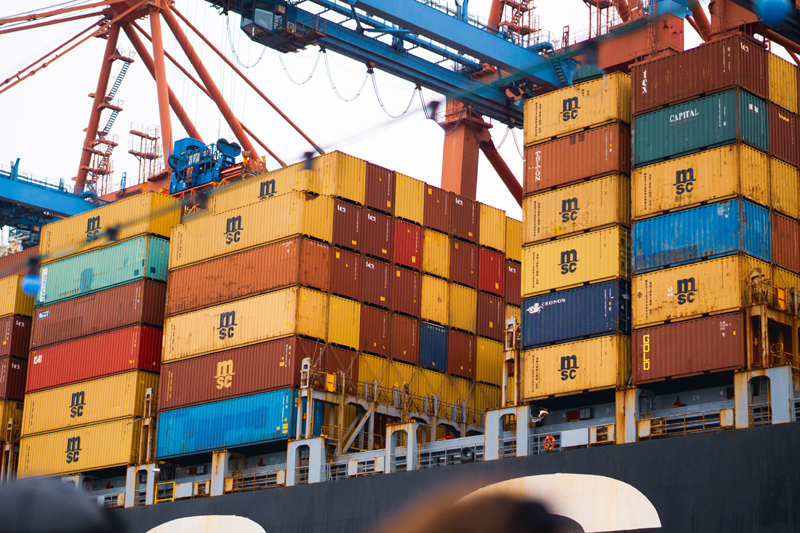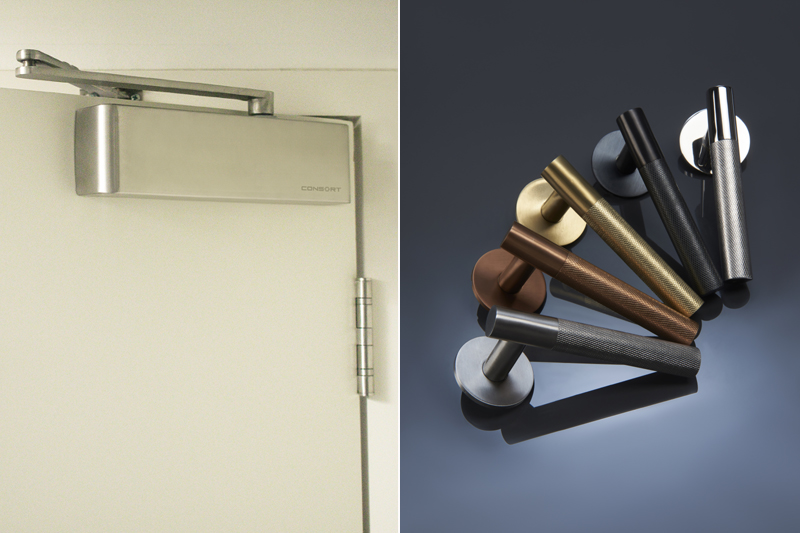
Despite the ongoing challenges to the global supply chain and the cost increases that have followed, Daniel May, Director at Consort Architectural Hardware, argues that quality and safety standards cannot be allowed to slip.
Since early 2020, the volatility of the global supply chain has plagued industries far and wide. The construction industry has felt the full force of it, with a lack of materials and long lead times inflating construction costs and placing constraints — and unavoidable delays — on projects large and small.
Despite many predicting economic recovery to stabilise, challenges such as a surge in consumer inflation and HGV driver shortages to name but two means construction is still facing a disparity between supply and demand. As a result, year-on-year costs for building work rose by 24.5% from March 2021 to March 2022, with raw material costs for work involving steel, concrete, timber and glass rising by 23% in the 12 months to September 2021, according to the Department for Business, Energy and Industrial Strategy.
This cause and effect looks set to continue throughout the remainder of this year, with a substantial rise in costs and a decrease in production output readily documented. This follows predictions from the Builders Merchants Federation and the Construction Products Association earlier in the year which raised concerns that the demand for construction products would exceed supply well into 2022.
The weakened supply of key building products becomes even more problematic when you consider life safety and security. Whether a new project, or the upkeep of an existing building and its hardware, the stable supply of quality materials, components and hardware products must remain a critical priority, albeit one that is currently met with several setbacks.
Yes, external factors can create uncontrollable circumstances, but the industry must continue to focus on quality control, so to not lose the progress that’s been made towards a safer construction infrastructure.

From a construction standpoint, a supply chain begins with raw materials, contains up to thousands of companies, and ends with finished goods for the industry and end user — of which many are vital components to the way our buildings safely and securely operate. Amongst many things, the coronavirus pandemic taught us how fragile the supply chain can be, with various cogs in the machine being caught off guard by the circumstances. In turn, this has created a backlog and led to a surge in demand for key materials and products which supply hasn’t always been able to keep up with.
As a manufacturer, two core elements have encumbered the fire safety and security hardware sector, those being cost and production output. Crucially, almost all organisations possess links to an international supply chain and regardless of where products are manufactured, the scarcity of raw materials has had a knock-on effect, especially when you consider pricing.
The cost of raw materials has surged and so too has the cost of transportation, where a shortage of containers and increased freight times has fallen short of demand. In turn, and when paired with a disjointed production output, we have seen a backlog of orders leading to project delays that can incur additional penalties for those involved.
Ironmongery for example is a key ingredient to fire safety, and despite time pressures, decision makers must continue to recognise the necessity of trusted solutions. And especially for time critical projects, those who face delays may fall into the pitfall of opting for cheaper, substandard products to move projects along and avoid any subsequent late penalties.
This is where the future safety of projects may falter. Meticulous decision making is now more important than ever, choosing the solutions that provide greater quality and therefore predictability, as opposed to inferior products that are chosen out of convenience and that may cause issues later down the line.
Keeping this in mind, the global supply chain must be met with caution and advanced planning to safeguard the integrity of the built environment moving forward. As we encounter these issues, it’s vital to recognise the significance of decisions and how they may directly impact construction projects and ultimately, the safety and security of our buildings and the people within.
Realistically, there are several reasons why the supply chain may continue to alter for some – even after costs and material production has stabilised. The Building Safety Bill is set to pass this year and will change the way many projects are run, starting with product procurement. Similarly, new frameworks such as the Environmental Act 2021 and Net Zero targets will also change how some consider sustainable construction, and thus the onus to source responsible solutions will deepen.
Throughout this period of instability, for hardware manufacturers, it is now imperative to plan inventory well in advance in a bid to remove any potential stock issues for customers later down the supply chain. Doing so will help to support customers, ensuring they have access to hardware products that meet the necessary strict levels of safety standards — therefore removing the risk of using inferior solutions.
However, maintaining life safety and security standards is a collective effort, one that must be met with a collaborative approach. From industry innovation to decision makers making safety conscious choices, we all have a part to play, even when the external environment presents us with difficulties.
Although economic decision making plays its part in the construction process, fire safety, security and sustainability will always remain key, recurring ingredients to successful building projects — and the risk of using an unsuitable product far outweighs any obligation for quick turnarounds.
Click here for more information on Consort Architectural Hardware’s range of products and support services for merchants.









